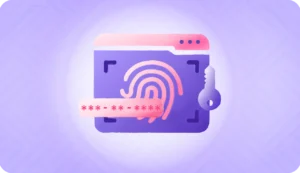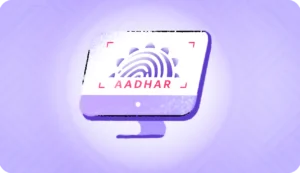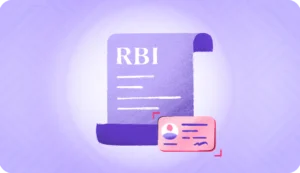Certainly we have been seeing a deluge of news, hype and information about everything getting decentralised. The crypto-movement should probably be credited for this, however as much as we love hearing this, it is worth acknowledging that there are various use-cases where unification (over centralisation) accelerates the digitisation process.
A very simple instance of this would be oAuth. *Login via Google* or *Login via Facebook* has clearly improved product funnels across so many products round the globe. A second example would be having your credit cards stored with your favourite online portal so that you don’t have to go through the process of entering card details over and over again. In both cases, the benefit of avoiding a few mundane actions trumps users’ concerns of centralising their data with a trusted provider.
At the core of this concept, a rather simple insight would be –
“Most users choose convenience over privacy when they are subjected to cognitive load enhancing workflows.”
A classic case of this behaviour is what we observed in the signing up process of digital financial services. The onboarding or the registration process is at the heart of the offering of any online financial product. On average, the typical Indian consumer signs up for at least 3-4 financial products offline or online. Every time they do so, they have to go over the cycle of verifying their identity. This is a frustrating process for the user.
Indian regulation in the fintech domain has earned good reputation particularly with UPI but this problem of repeatedly proving your identity was duly acknowledged by the regulator and acted upon as well. Imagine doing your KYC once and then becoming a verified consumer – a common KYC record.
Enter KYC record update
This gave birth to the KYC record update under the government. Every time you complete your KYC with a financial intermediary, your details are verified and get uploaded to a repository. You get a 14 digit record number that you can use elsewhere.
What is a KYC record update?
KYC record databse is a repository of KYC records of customers in the financial sector with uniform KYC norms and inter-usability of the KYC records across the sector with an objective to reduce the burden of producing KYC documents and getting those verified every time the customer creates a new relationship with a financial entity.
The flow is pretty simple –
- Collect the users’ PAN
- Lookup in the KYC record search and download database for a match with PAN
- If you find a match, you get direct access to a users’ KYC details
- Typically, intermediaries re-verify the information they receive for their reference purposes.
Every record returns a zip file and an XML file. The following information is present at the minimum –
- A photo of the consumer
- OVD copy – An officially valid document for e.g. Aadhaar or Voter ID
- PII details in the XML
We have seen records where there are up to 15-160 elements that need to be addressed in some form or the other.
Financial intermediaries process, validate, and store some of this information without the end users’ intervention to give them a happy registration process.

Comparative Analysis of different types of KYC in the Indian landscape
Features of KYC record update
Financial institutions can avoid the drawn-out process of customer onboarding thanks to the KYC record upload registry. They provide a single window where users can access all pertinent consumer data. This also contributes to significant labour and time savings.
The KIN or the KYC record update number is a unique 14-digit number connected with ID proof and is the unique identifier that each customer’s KYC information is tied to.
Financial service providers can quickly and easily access these KYC records. Investors need not go through the hassle of repeatedly completing multiple KYCs when they want to access different financial services. All the linked Financial Institutions will be informed of any updates once a customer’s KYC records have been updated on the KYC record update.
How does KYC record upload work?
Performing one instance of KYC record update is sufficient for availing multiple financial services. The user will receive a 14-digit KYC Identification Number (KIN) through SMS on their registered mobile number and via email upon the completion of KYC record upload and the submission & verification of the necessary documents. The customer can then use this unique identity verification number for completing kyc with any other bank or financial institution. Businesses can easily perform KYC verification by retrieving the customer’s confirmed KYC record upload maintained with the government using this KIN. KYC record update really makes the customer onboarding process a simpler and quicker process.
Benefits of the KYC record update Process
There are several benefits of having a KYC record database instead of having to complete the KYC multiple times for different organisations.
Once an investor has registered with KYC record, the entire documentation process is not necessary again. The onboarding process is quicker when investing with another financial institution.
It is an easy and user-friendly process that can be completed by anyone.
This minimizes the investment authorities’ workload. The process of obtaining investment data is now considerably simpler. The government will also be able to determine how many investments the client has thanks to KYC record update. Individuals can invest in a variety of financial schemes using their KYC record update numbers, such as stock markets, mutual funds, and insurance policies.
Types of KYC record upload accounts
There are four main types of KYC record update accounts –
- Normal Account
The type of document a customer uploads determines the account that is subsequently created. Any of the following documents that the consumer presents as identification establishes a standard account. These documents include a PAN Card, NREGA Job Card, Aadhaar Card, Voter ID Card, Driver’s License, or Passport.
- Simplified measures account
A simplified measures account is created when the customer presents any other valid document (OVD) instead of the documents used for a normal account and are prefixed with an ‘L’.
- Small account
A small account is one where a customer submits personal information along with a photograph.
These accounts have the prefix ‘S’.
- OTP-based eKYC account
An OTP-based eKYC is completed digitally and submitted along with a photograph. Accounts are prefixed with an ‘O’.
Here come the challenges
When it comes to regulation and compliance, it is always black and white in spirit but the varied hue of grey in practice. With new compliance, there will be different challenges and the KYC record update is not so different.
Perceptions around the hit rate
Many intermediaries have been not prompt in complying with this regulation. The chances of finding a specific user’s record has had issues in the past. This number has significantly improved in the last year or so but there are perception issues around the proportion of consumers who would already have a record in the KYC record registry.
Through the experience with our clients, we find that close to 70% of the time you are bound to find your users’ record on KYC record update. We have to keep in mind that the digitisation process in India will always be work in progress and therefore going forward this is a challenge that will hopefully get solved faster.
Quality of data present
Talk to any data analyst or scientist, all of them would say that about 75% of their time is spent in converting the data into the right shape and form. The reality is that this is ubiquitous and is present in all industries. The smartness lies in minimising the methods and time spent in cleaning data.
We analysed a wide set of KYC record updates and noticed a few things :
- Standard documents may not be standard – we noticed that documents like PAN and Aadhaar have been uploaded in custom formats


- Robustness issues with images and selfies – the quality of the photo may not be great, the entire application form might be attached along with the photo instead of just a single photo

- Robustness issues with images and selfies – the quality of the photo may not be great, the entire application form might be attached along with the photo instead of just a single photo
Without having to say much, it is clear that there it is a minefield when it comes to cleaning customer data. Just to play the devil’s advocate, one can say KYC record update is making the process more complex.
Let’s get to simplify the process
More often than not, complex problems have simple solutions. This is precisely what Hyperverge helps you to do when it comes to KYC record update. There are several challenges, variations in names, poor formats, multiple or no photos possibly. What we try to do is make all of this boil down to either, “I approve this record directly” or “do I have to get it reviewed?”
HyperVerge KYC record update extractor accepts the KYC record upload record as it is and gives you a simple 3-way output – approve, review or reject. This decision recommendation is made based on a complex scoring mechanism.
The table below talks about how we assign scores-

Our proprietary algorithm goes beyond the regular OCR. Some of what we do is listed below –
- OCR extraction on non standard Aadhaar / PAN formats
- Fuzzy field matching for name, address and other fields
- Face comparison through photo and ID cards
All of this goes into our in-house scoring mechanism to give you a filtered decisioning recommendation. It doesn’t just end here; for the more discerning, we also return specific mismatch reasons – giving more of the customer’s information to take actions on the review.
How can HyperVerge help you?
We have built an AI based KYC record update Data & Quality Validation API which can automatically assess the quality of the data, verify details present and approve the KYC. Here are some highlights:
- Auto approval/rejection of about 88.5% KYC record update downloads. One click KYC for about 30% of approved customers
- Minimize Customer Drop Off by at least 5%
- Minimize Ops Cost by up to 90%
You can save upto INR 35,000 for every 100 approved customers. Would you like more details about the product and how you can embed in your workflow, write to us at contact@hyperverge.co or fill out a request form here.
With the introduction of KYC record update, RBI has tried to solve the complexities in the KYC process, thus letting the users access financial services in the most seamless manner. The KYC record update registry has been set up to spread the culture of a smooth and secure customer onboarding process. The earlier process which required KYC to be completed for each product or with every institution now needs to be done only once. While there may be some early teething issues, with time all this will get sorted out making KYC record update or KYC record upload a norm for the industry. HyperVerge KYC record update Extractor certainly goes a step further in making this happen.
HyperVerge has enabled large organizations to safely authenticate and/or onboard millions of users over the past decade with minimal onboarding effort and turnaround time while ensuring protection against any fraudulent activity through identity verification services.
Large customers in telecom (Reliance Jio, Vodafone, etc), lending (Aditya Birla Capital, L&T Financial, EarlySalary, etc), securities (ICICI Securities, Angel Broking, Groww, etc), payments (Razorpay), e-commerce (Swiggy) and other industries trust HyperVerge’s onboarding solutions to safely onboard their users.
To speak to one of our solution experts, reach out to us at contact@hyperverge.co or contact us here.





